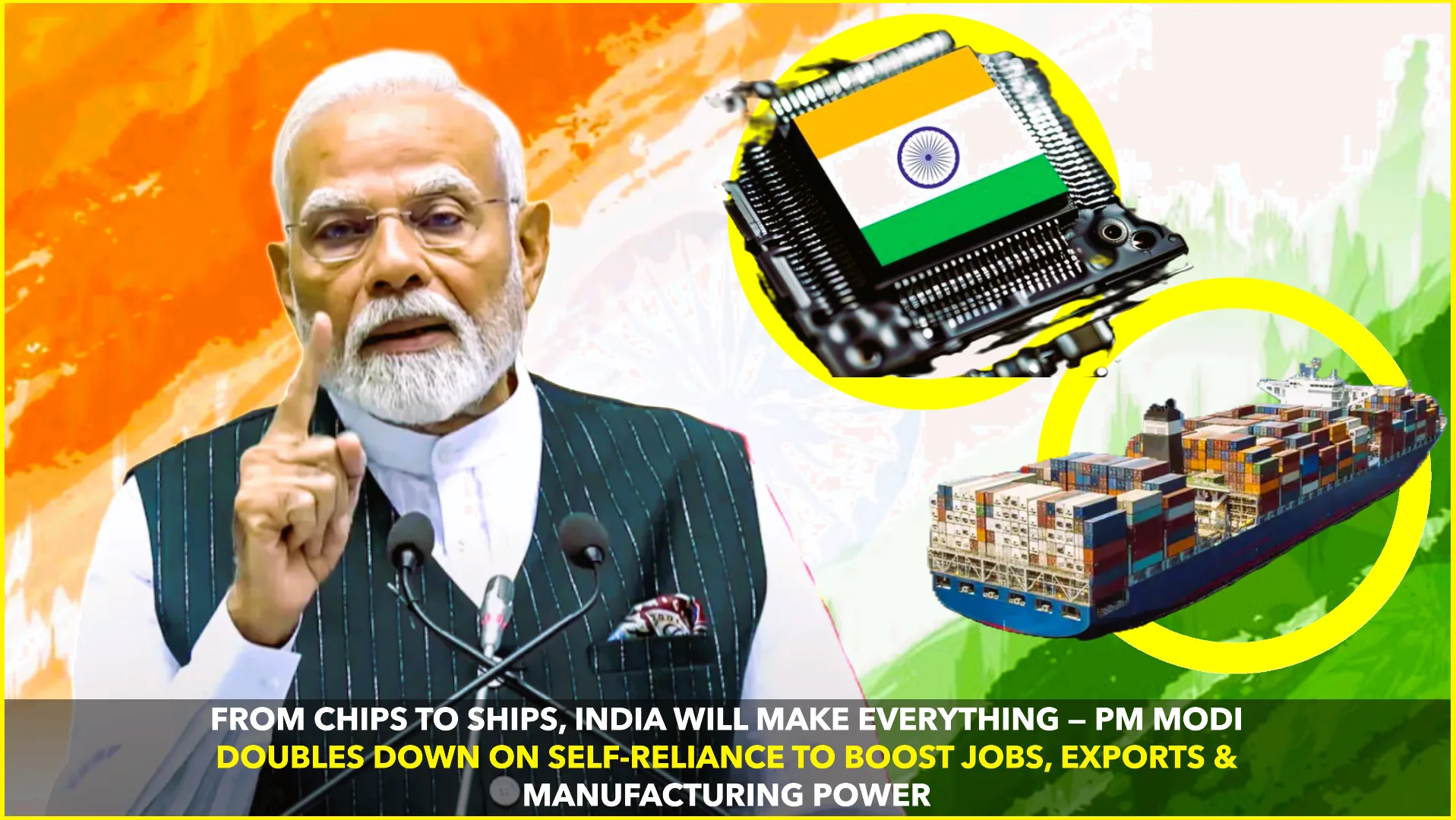“Self-Reliant Leap”
Prime Minister Narendra Modi has offered a sweeping new vision for India — one in which everything from state-of-the-art semiconductor chips to large ocean-going ships is designed, built, and exported from Indian soil. This push is meant to deepen the “Make in India” mission, unlock millions of jobs, expand exports, and recast India as a world leader in manufacturing.
In recent speeches and public programs, Modi has repeatedly brought up the phrase “from chips to ships” to stress that India must no longer depend on foreign countries for critical technologies and infrastructure. The Times of India+2The Times of India+2
Vision Meets Action
- On the semiconductor front, the government has cleared multiple major chip projects, investing heavily to build the value chain — from chip design to fabrication (manufacturing) and packaging. The Economic Times+4Reuters+4News on Air+4
- One recent example: the cabinet approved an HCL-Foxconn semiconductor plant near Jewar, Uttar Pradesh, which will produce tens of thousands of wafers monthly and millions of display driver chips. Reuters
- In maritime and shipbuilding, Modi has pushed reforms like “One Nation, One Port Process” and classifying large ships as infrastructure to ease financing and regulatory burdens. The Tribune+2NDTV Profit+2
- He noted that India currently pays upwards of ₹6 lakh crore annually to foreign shipping firms — money that could instead support domestic shipyards and related industries. The Tribune
Why It Matters
Jobs & Skills: Building chips and ships in India requires a skilled workforce — engineers, technicians, designers, welders, supply-chain workers. The expand in manufacturing can absorb a vast number of youth who might otherwise be stuck in informal or low-productivity jobs.
Export Potential: If India can scale up quality manufacturing in sectors like electronics and maritime, it can move from being primarily an importer to a major exporter. That helps earn foreign exchange, reduce trade deficits, and help global supply chains diversify.
Strategic Autonomy: In key areas like semiconductors, defense, and shipping, global uncertainties (e.g. trade wars, supply chain disruptions) make dependence on foreign suppliers risky. A more self-reliant industrial base increases resilience. Modi’s push also mirrors a broader drive toward “Atmanirbhar Bharat” (self-reliant India). The Economic Times+4Wikipedia+4NDTV Profit+4
Global Credibility: If India succeeds, it can be seen not just as a growing market but as a manufacturing hub that others rely on — further strengthening its geopolitical and economic standing.
Challenges & Reality Check
The vision is bold, but obstacles remain:
- Technology gaps: Some of the most advanced chipmaking technologies are tightly held by a few countries. India may begin with less advanced (“trailing edge”) semiconductors before moving upward. Reuters
- Capital & incentives: Building chip fabs and modern shipyards is capital-intensive. Sustained financial incentives, policy stability, and ease of doing business are essential.
- Global competition: India must contend with countries like Taiwan, South Korea, and China that have decades of experience in these industries.
- Execution and scale: Many previous announcements have faced delays or scaling issues. Transforming the industry at scale will require consistent follow-through.
- Balancing openness and protection: India must navigate a fine line — encouraging domestic production without becoming overly protectionist and alienating trading partners.
What to Watch Next
- How many of the announced chip and ship projects actually begin production, and in what timeline.
- Job creation and skill development metrics in regions hosting these projects.
- Export figures from these sectors over the next 3–5 years.
- Policy moves (tax breaks, financing schemes, regulatory reforms) to support this vision.
- Global industry partners investing in Indian manufacturing — especially in technology transfer and collaboration.
This emerging push — “chips to ships” — is more than a slogan. It marks a turning point in India’s industrial ambition. If executed well, it could rewrite the country’s role in global trade, secure millions of livelihoods, and shift perceptions from “made in India” being a dream to a global reality.










